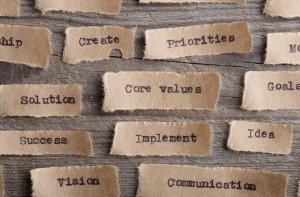Competency frameworks provide inputs to Organizations on the Behavioral and Technical competencies that will make employees successful in their roles.
Competency framework forms the basis for recruiting capable candidates; making them job-ready; prepare them for future roles; running assessment centres; identifying talent pool; succession planning etc.
The Prashna Approach
Importance of competency mapping in performance management
Monitoring, reviewing, and controlling performance is nearly impossible without competency mapping metrics.
Competency mapping is an approach to understanding and documenting the skills, knowledge, abilities, and behaviours (KAB) required for success in a particular job or job family. Competency mapping helps identify the behaviours needed to be successful in a job and determine how well a person performs those competencies. The information gathered from competency mapping can then be used to develop selection tools or develop training and development plans. In a competency model, competency is defined as a behavioural description of an employee's particular, observable behaviour.

The performance management process determines whether the company has achieved its strategic goals. This process typically includes the following activities:
- Establishing business objectives.
- Defining measures for the attainment of those objectives.
- Planning how to achieve them.
- Analysing results.
- Setting new goals.
This process aims to analyse and learn about the company's current state, identify strengths and weaknesses, and plan future actions.
The first step is defining the success of various roles in an organisation. Then, one needs to establish which metrics will demonstrate progress toward achieving the goal. These metrics should be measurable and consistent from year to year to be tracked accurately and timely. Once these steps are complete, it's important to track those metrics and compare them against baseline data. This data helps managers understand if their efforts are producing the desired outcome. Ultimately, the goal of the performance management process is to set clear expectations, focus attention on priorities, motivate employees, and improve organisational effectiveness.
It is challenging to evaluate employees' performance only with target accomplishment data. For example, considering a competent employee working in a saturated market or work environment is non-conducive. In addition, monitoring, reviewing, and controlling performance is nearly impossible without competency mapping metrics.
Competency mapping process and steps
The competency mapping process includes a self-assessment that helps people identify their strengths, weaknesses, and interests. The self-assessment results are used to create a visual chart of the skills an individual has, the skills that are needed for a particular position, and the skills that the individual needs to learn to fill the position. The results of this chart can be used to develop a plan for how an individual can achieve his or her goals. A competency mapping process requires individuals to examine the skills they need to succeed in a given position or in a given career.
Types of competency mapping
There are three main types of competency mapping: 1. Functional Competency Mapping 2. Job Competency Map 3. Organizational Competency Map. The first two are helpful for individual development planning, while the third one helps to identify knowledge gaps and organisational readiness.
Functional Competency Mapping
Functional competency mapping is a tool used to understand what each person at your company needs to do to achieve a specific goal. This data helps identify the skills required for each job position and which positions need to be filled first. The functional competencies map also helps determine who should be hired and trained to fill these roles.
Job Competency Map
A job competency map is a tool used to prioritise your personal goals for career advancement. It helps you identify what skills and experiences you need to acquire to reach your professional objectives. The process of developing a job competency map includes identifying your current skill set, defining your desired skill set, mapping out how to develop these skills, and then using those skills to secure employment opportunities.
Organizational Competency Map
An Organizational Competency Map is a tool used to identify strengths and weaknesses in an organisation's ability to execute against business objectives. The map is composed of four quadrants: Execution, Strategy, People, and Processes. Each quadrant contains subcomponents that must be aligned for maximum performance.
Competency mapping in HRM
The primary role of competency mapping in HRM is to provide a common language for HR professionals, managers and employees to discuss individual performance and development. The competency mapping process can help employees understand how their performance could be improved in a company and how the company can better align the employees and their jobs.
